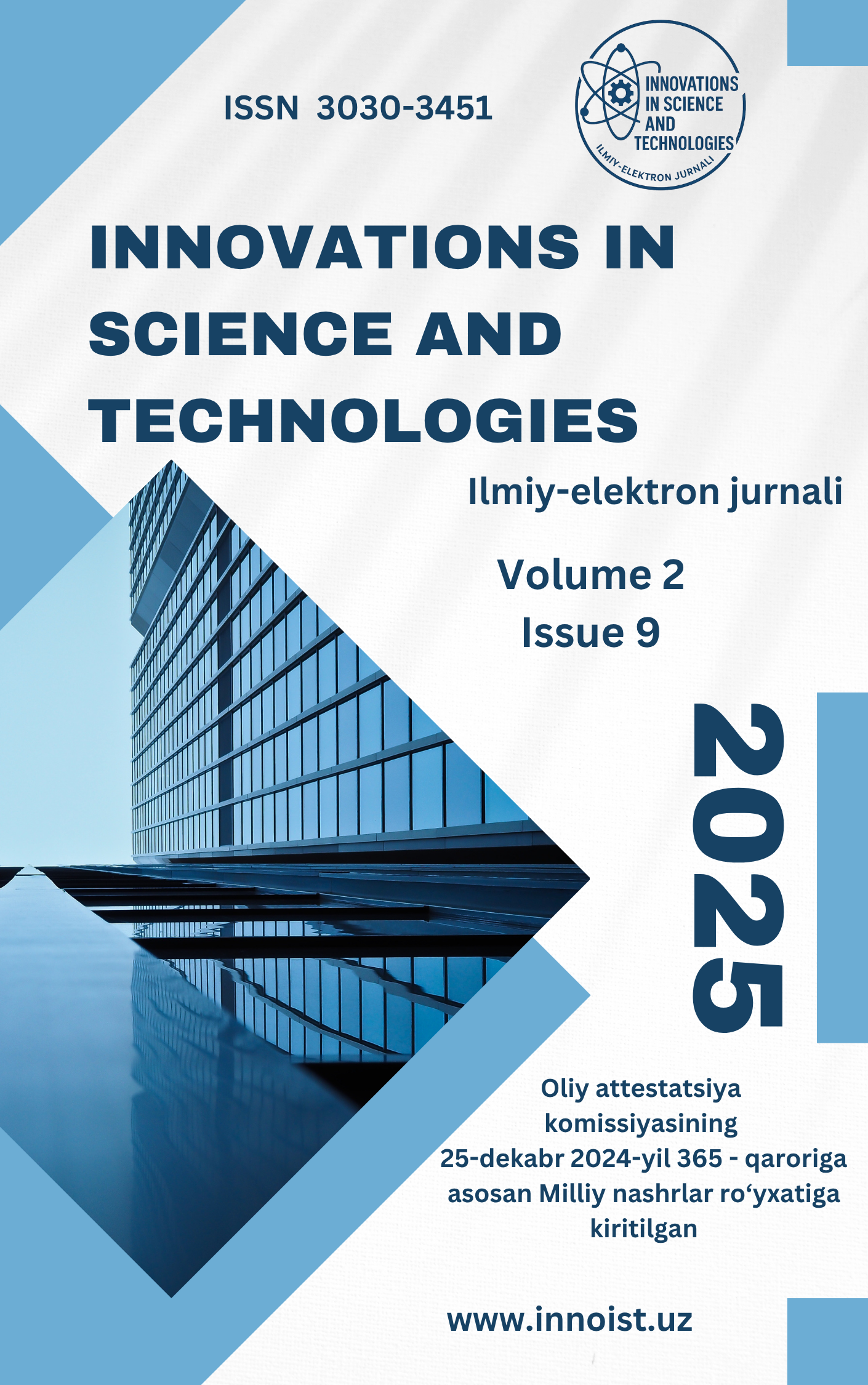INNOVATIVE APPROACHES TO THE MODERNIZATION OF INDUSTRIAL CAPITAL AS A FACTOR IN ENSURING ENVIRONMENTALLY ORIENTED ECONOMIC GROWTH
Keywords:
Industrial capital, green economy, sustainable economic growth, energy efficiency, renewable energy sources, carbon intensity, innovation, green finance.Abstract
In the context of the global transition to a "green" economy, the transformation of industrial capital, aimed at ensuring sustainable economic growth, is of particular importance. International experience demonstrates that investments in renewable energy sources, energy efficiency improvements and the introduction of green technologies contribute to reducing carbon intensity and creating millions of new jobs. At the same time, the national practice of the Republic of Uzbekistan is characterized by a number of imbalances: the high energy intensity of the industrial sector, the relatively low share of renewable energy in the energy mix and the insufficient development of financial instruments for environmental modernization. The results of the study show that the successful formation of an innovative model for the use of industrial capital requires an integrated approach, including increased investment in environmentally friendly technologies, institutional support for green finance, modernization of industrial facilities and training for new industries. In the long term, such measures will increase the competitiveness of the national economy, balance industrial development and ensure Uzbekistan's integration into global sustainable trends.
Downloads
References
1. Stern, N. (2007). The Economics of Climate Change: The Stern Review. Cambridge: Cambridge University Press.
2. Stiglitz, J. E. (2019). People, Power, and Profits: Progressive Capitalism for an Age of Discontent. New York: W. W. Norton & Company.
3. Mazzucato, M. (2018). The Value of Everything: Making and Taking in the Global Economy. London: Penguin Books.
4. Mazzucato, M. (2021). Mission Economy: A Moonshot Guide to Changing Capitalism. London: Penguin Business.
5. Ташматов, Р. Х., Хакимов, З. А., & Каримова, Н. С. (2021). Формирование «зелёной» экономики в Республике Узбекистан: институциональные аспекты и приоритетные направления. Экономика и инновационные технологии, № 5, 45–56.
6. Абдуллаева, Ш. Р. (2020). Развитие «зелёной» экономики как фактор обеспечения устойчивого экономического роста. Вестник Ташкентского государственного экономического университета, № 3, 72–80.
7. Тулкинова, М. С. (2022). Инструменты финансирования перехода к «зелёной» экономике: возможности и вызовы для Узбекистана. Журнал «Экономика и финансы», № 2, 54–63.
8. International Energy Agency (IEA). World Energy Investment 2023: Overview and Key Findings. Содержит данные о глобальных инвестициях в чистую энергетику, суммы в триллионы долларов, доли инвестиций в возобновляемые источники, сравнение ростов инвестиций в «зелёные» технологии и ископаемое топливо. IEA
9. International Energy Agency (IEA). Clean Energy is Boosting Economic Growth. Обзорный материал, где обсуждается вклад чистой энергетики в ВВП, рост инвестиций, влияние на индустрию. prod.iea.org
10. Compiled by the author.
11. Enerdata. Uzbekistan Total Energy Production & Consumption. Данные по Узбекистану: общее потребление энергии, источники (газ, нефть, уголь, гидроэнергия), изменение интенсивности, уровень энергопотребления на душу населения. Enerdata+1
12. IEA. Uzbekistan Energy Profile. Информация по структуре электрического потребления по секторам (промышленность, население и др.), законы и нормативы по возобновляемой энергии, текущее состояние ВИЭ в стране. IEA
13. Compiled by the author.
14. International Labour Organization (ILO). Green Jobs estimate to 2030.
Downloads
Published
Issue
Section
License

This work is licensed under a Creative Commons Attribution 4.0 International License.
License Terms of our Journal











